Timbuk2 Robin Commuter Backpack Review
While commuting through bad weather is challenging, the Timbuk2 Robin Commuter Backpack’s slick fabric and rainfly can tough it out with you.
Our Verdict
Save time. Get access to brief summaries of our reviews so you can browse and make decisions more efficiently.
Pros
- The included rainfly has its own set of loops
- Material has a very slick and water-resistant finish, even without the rainfly
- Upper front pocket’s magnetic flap makes access easy, fast, and even satisfying
Cons
- Lower front pocket’s opening feels too tight
- It’s tricky reaching gear at the bottom of this rather tall top-loading bag
- You have to undo the laptop sleeve’s full-length hook-and-loop to access it
Technical Details
-
Capacity
20l
-
Weight (lb)
2 lb (0.9 kg)
-
Dimensions
18.2 in x 10.6 in x 5.51 in (46.2 x 26.9 x 14 cm)
-
Notable Materials
Nylon, Duraflex Hardware, YKK Zippers
-
Manufacturing Country
Indonesia
-
Laptop Compartment Size
13"
-
Warranty Information
Full Review
The daily commute is filled with factors beyond your control. Long queues, ripped bus seats, rude passengers, and even the weather. That last one is particularly concerning if you’re carrying sensitive electronics—like a laptop—or a spare set of clothing for after the gym (or a rough day at the office). Fortunately, a good backpack can solve at least that weather problem.
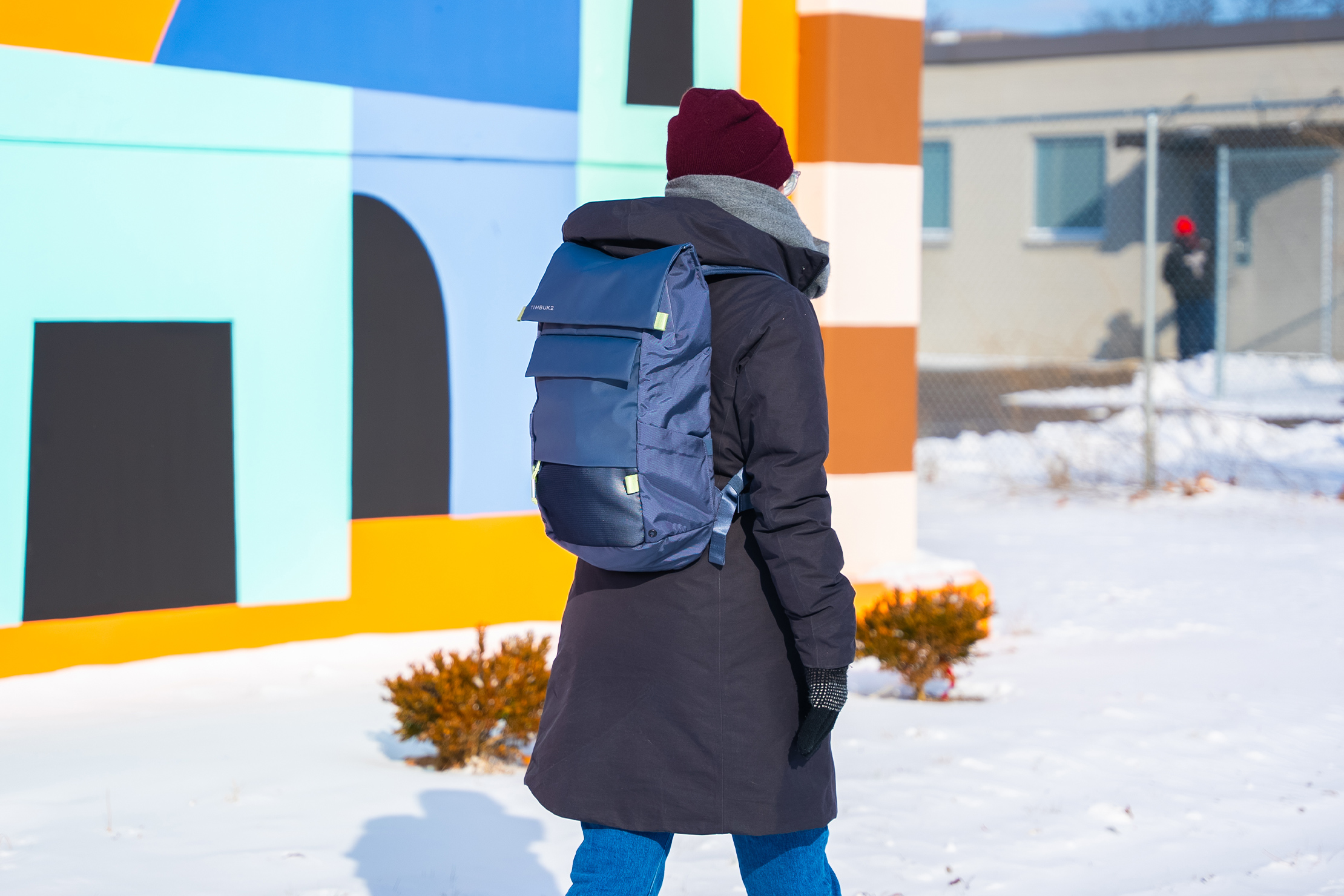
While the Timbuk2 Robin Commuter Backpack can’t repel incoming rain clouds, its slick finish and included rainfly is the second-best solution. As a commuter backpack, it also has a relatively slim shape. However, it’s also quite tall, so it’ll be interesting to see how easy it is to pack and access gear. So, if you’re ready, hop onto the review below!
External Components
The first word that comes to mind when we look at the Robin Commuter Backpack is “slick.” The main material is a relatively high-denier nylon fabric, but the TPU-like coating gives it that shiny, water-resistant look. Raindrops bead off with ease against this slick backdrop, and removing stains is easier since they’re less likely to permeate. It sort of reminds us of tarpaulin, though it probably won’t be as prone to scratches.
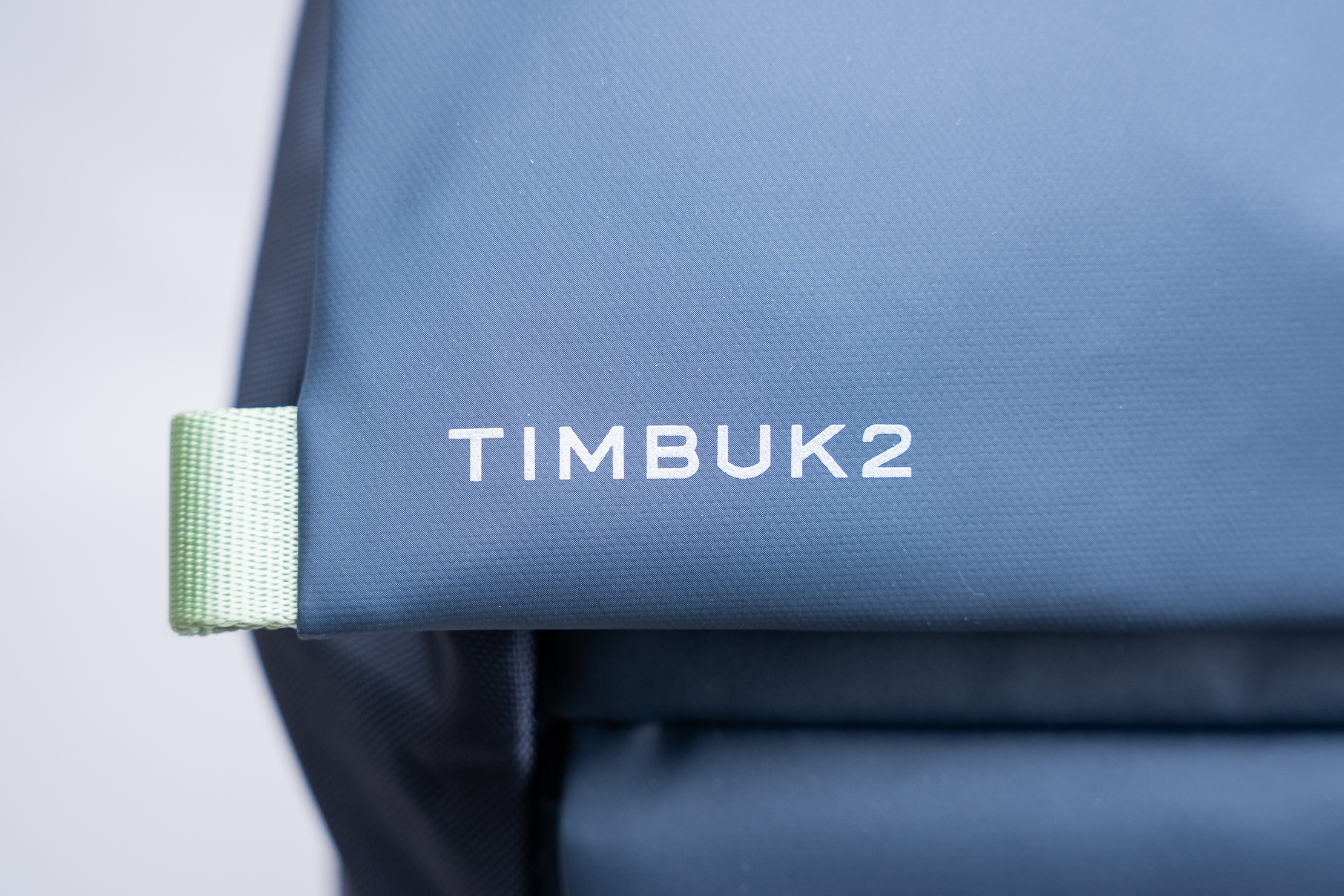
Another way to describe the Robin Commuter Backpack is “clean-looking.” The busiest parts are limited to the horizontal lines segmenting the bag. The branding is only modestly sized and placed tastefully off-center, and the only protrusions worth noting are the four pull tabs. You may also notice that a portion of the front fabric is of a different shade, and you can rest assured that this isn’t shoddy quality assurance.
This panel, at least in photos, is a different shade because it’s reflective, which is evident once you have it on hand. This makes it easier to spot you under poor lighting conditions, such as at night when you’re standing on a sidewalk or cycling along a road. You don’t have to rely solely on this reflective panel, either. Reach into the bottom seam, and you’ll find a loop where you can attach a bike light if you have one.

The Robin Commuter Backpack’s fabric is very water-resistant, but once the downpour gets heavy, it’s time to bust out the included rainfly. It’s located in a hidden zippered pocket at the bag’s base and attached by a short strap. We typically find rainflies like these on large outdoor-focused backpacks. Nonetheless, having one for those who prioritize keeping their gear dry and frequently commute under inclement weather makes a ton of sense. The rainfly is also removable, but we suggest keeping it with you in case of a rainy day.
One fairly unique touch of this rainfly is the included set of loops. This is thoughtful since the rainfly will obviously cover up your bike light if you had one hanging from the bottom loop we mentioned earlier. The loops are also located in the middle of a reflective section of the rainfly to enhance your visibility.

At the top of the back panel is a fairly sizable grab handle that goes well with the bag’s subtle knapsack styling. There’s nothing much to complain about this except that it can be too thick to hang on small restroom stall hooks. We could blame the bag for this, but we’d prefer it if bathroom stall hooks were generally bigger and beefier.
Even though the Robin Commuter Backpack’s looks are mostly minimal, its harness system, by contrast, is somewhat cluttered. The shoulder straps themselves are reasonably sized, with just enough padding for comfort. However, the loops of the sternum strap, specifically, look distracting to us. No, it’s not the reflective finish that bothers us, but rather the way they stick against the straps’ flat surfaces.
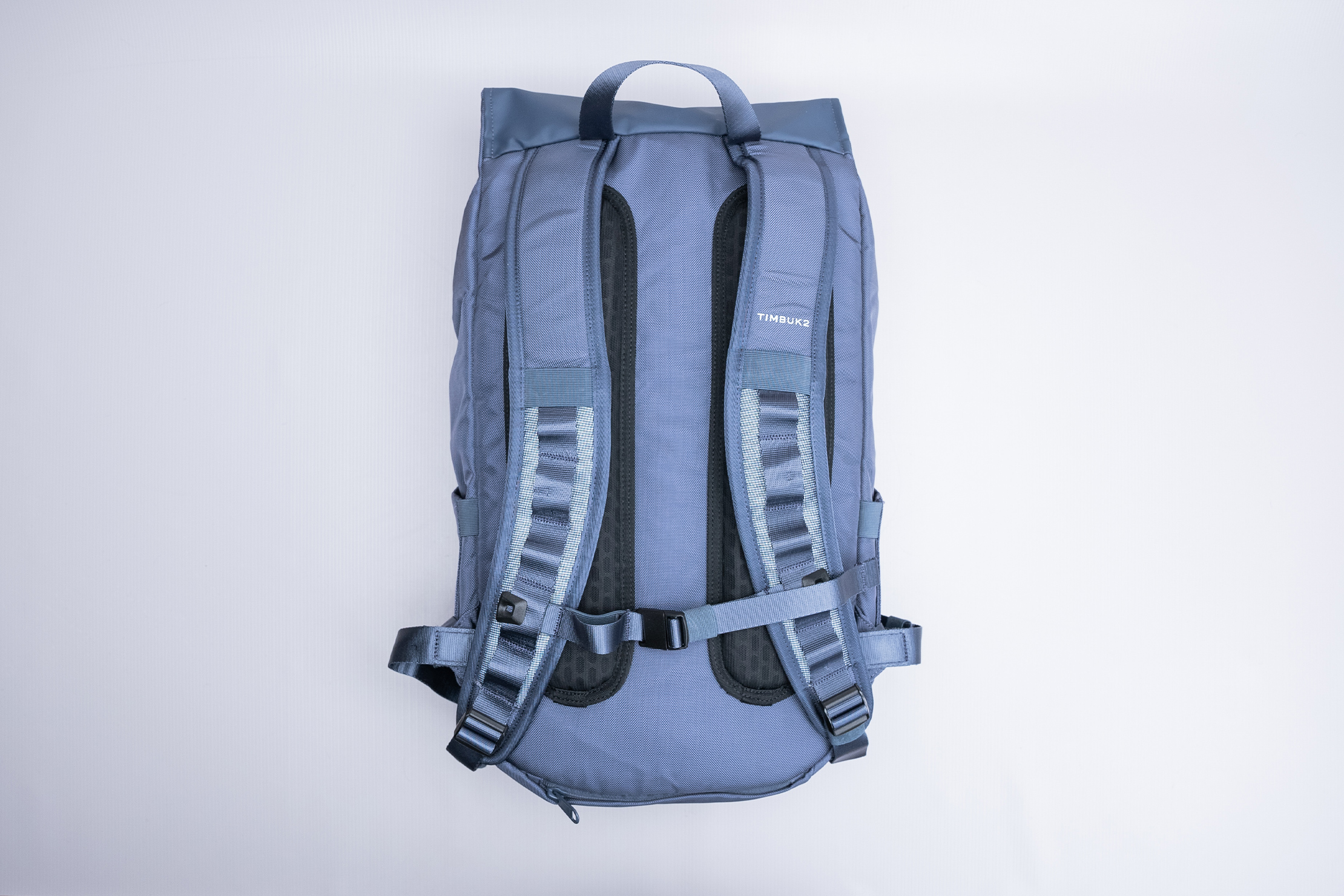
Yep, those loops also mean that the sternum strap can only be adjusted step by step vertically. By comparison, other backpacks have sliding sternum straps mounted on rails that offer more granular adjustment. Another one of our concerns is that—based on experience—sternum straps that clip onto loops like these can slip out. Fortunately, that hasn’t happened with the Robin Commuter Backpack.
Take note that the sternum strap uses a magnetic FIDLOCK buckle for its closure. We’ve generally found magnetic buckles on sternum straps frivolous, as simple side-release buckles function just as well. That said, this FIDLOCK buckle works fine, and our sole nitpick is that the buckle tends to engage by itself whenever we set the bag aside—magnets just have a mind of their own, we suppose.
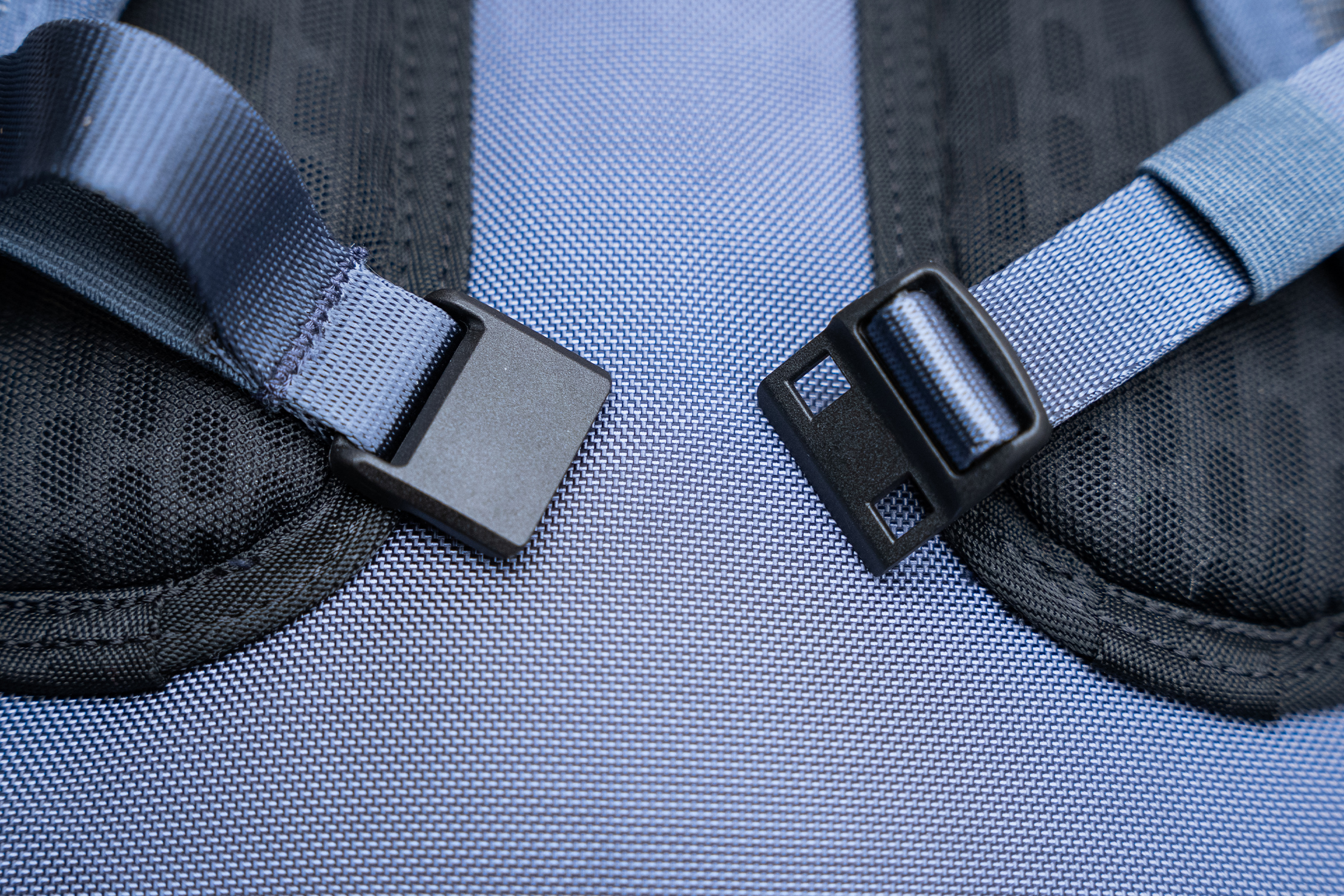
Also included is a hip belt. It isn’t necessary for a relatively light 20-liter backpack like this. It’s more for extra stability and keeping the bag close to you. Interestingly, it’s attached to the bag via hook-and-loop closures, so they’re relatively easy to detach. Alternatively, you can cinch them flat against the back panel so they’re out of the way.
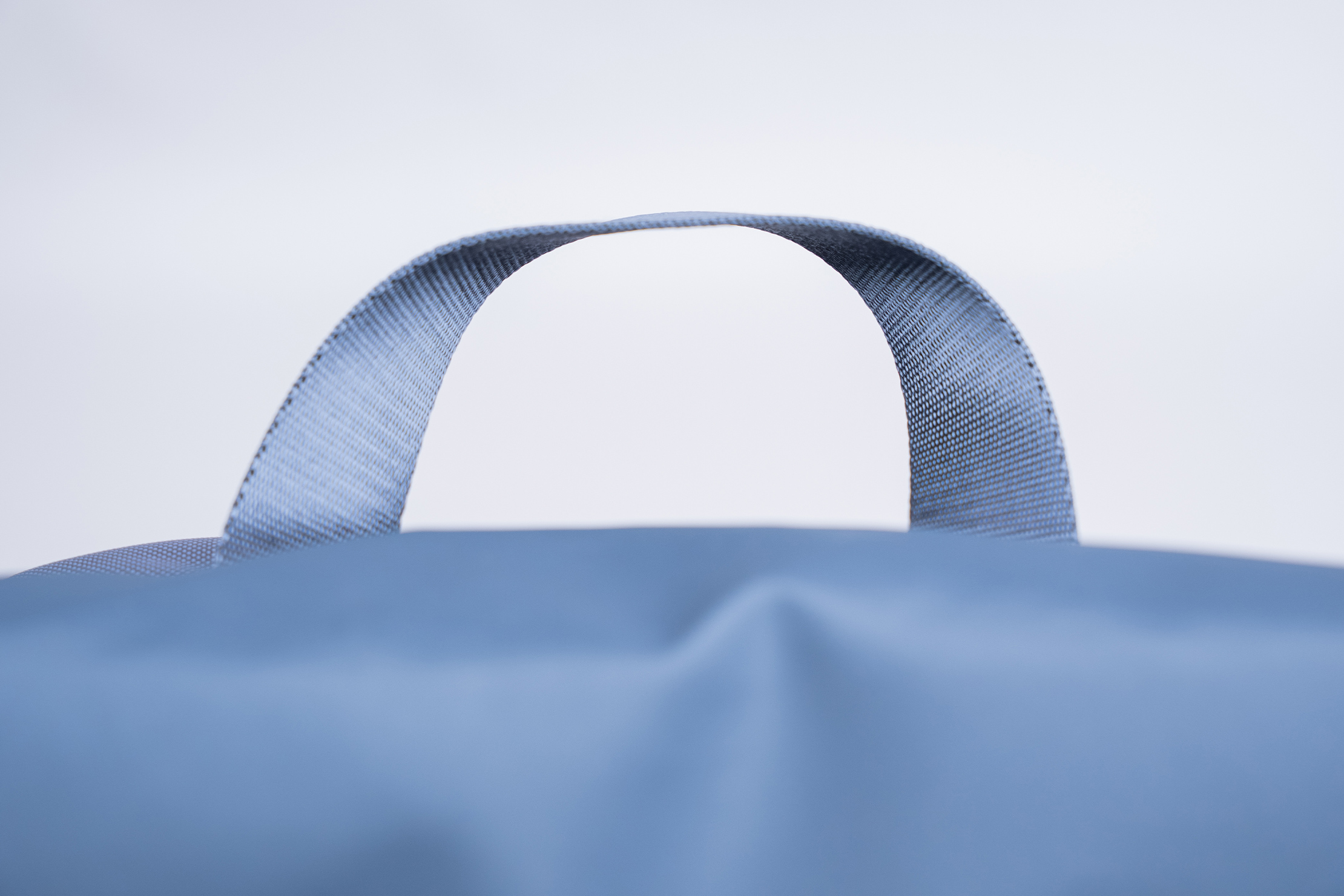
Lastly, the back panel’s padding consists of two foam sections running lengthwise. Both are covered in mesh so air can flow more freely when it gets hot, which is important if your commutes are long. The padding’s thickness doesn’t look overkill, but user comfort can vary, which we’ll discuss in the next section.
Fit Notes
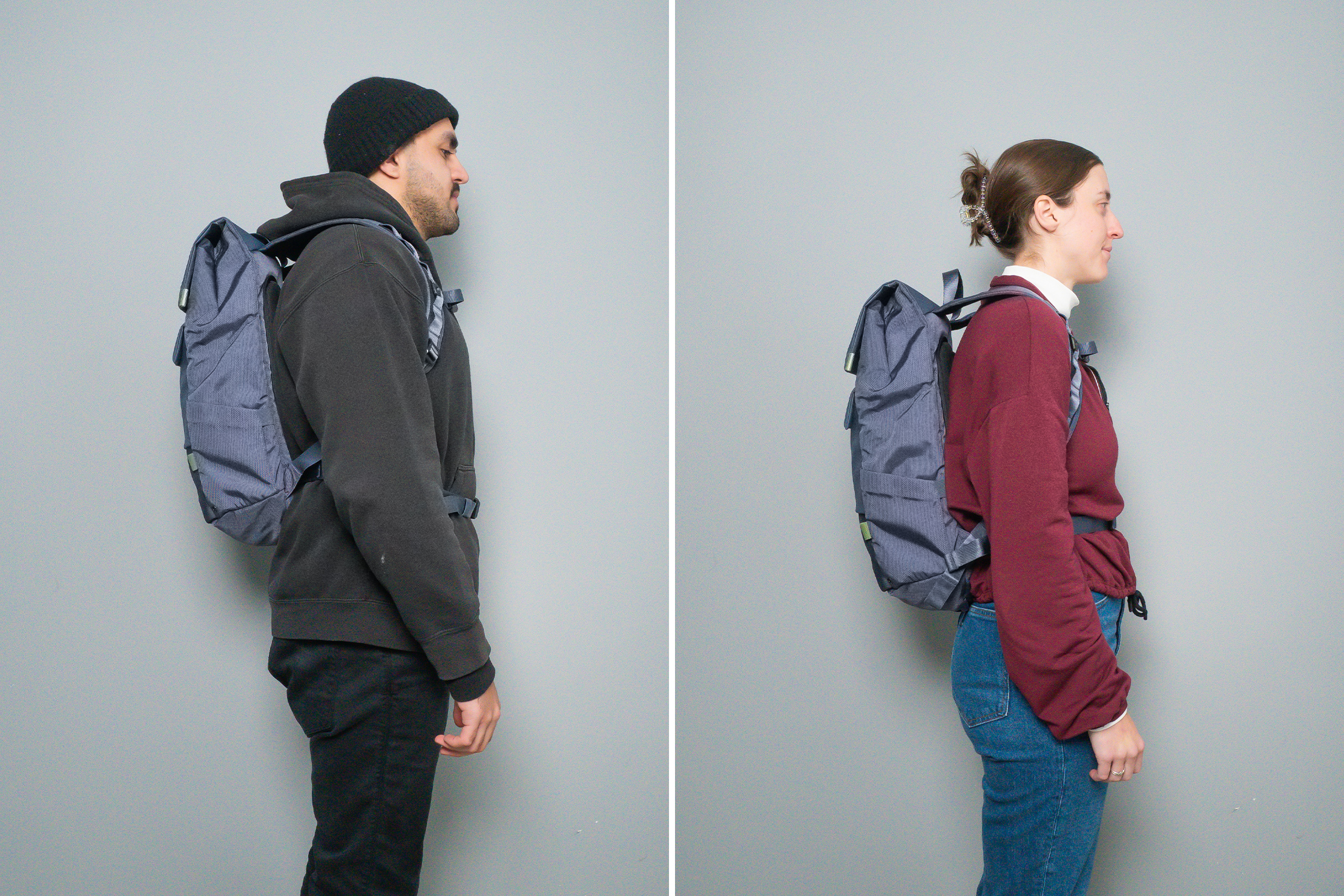
The Robin Commuter Backpack’s fit feels well-balanced and comfortable. The bag’s relatively tall, but slim shape keeps the weight well-centered, so there’s no appreciable sagginess. Consequently, the sternum strap and hip belt aren’t necessary for day-to-day carrying, though the latter proves useful if you’re cycling and need extra security.
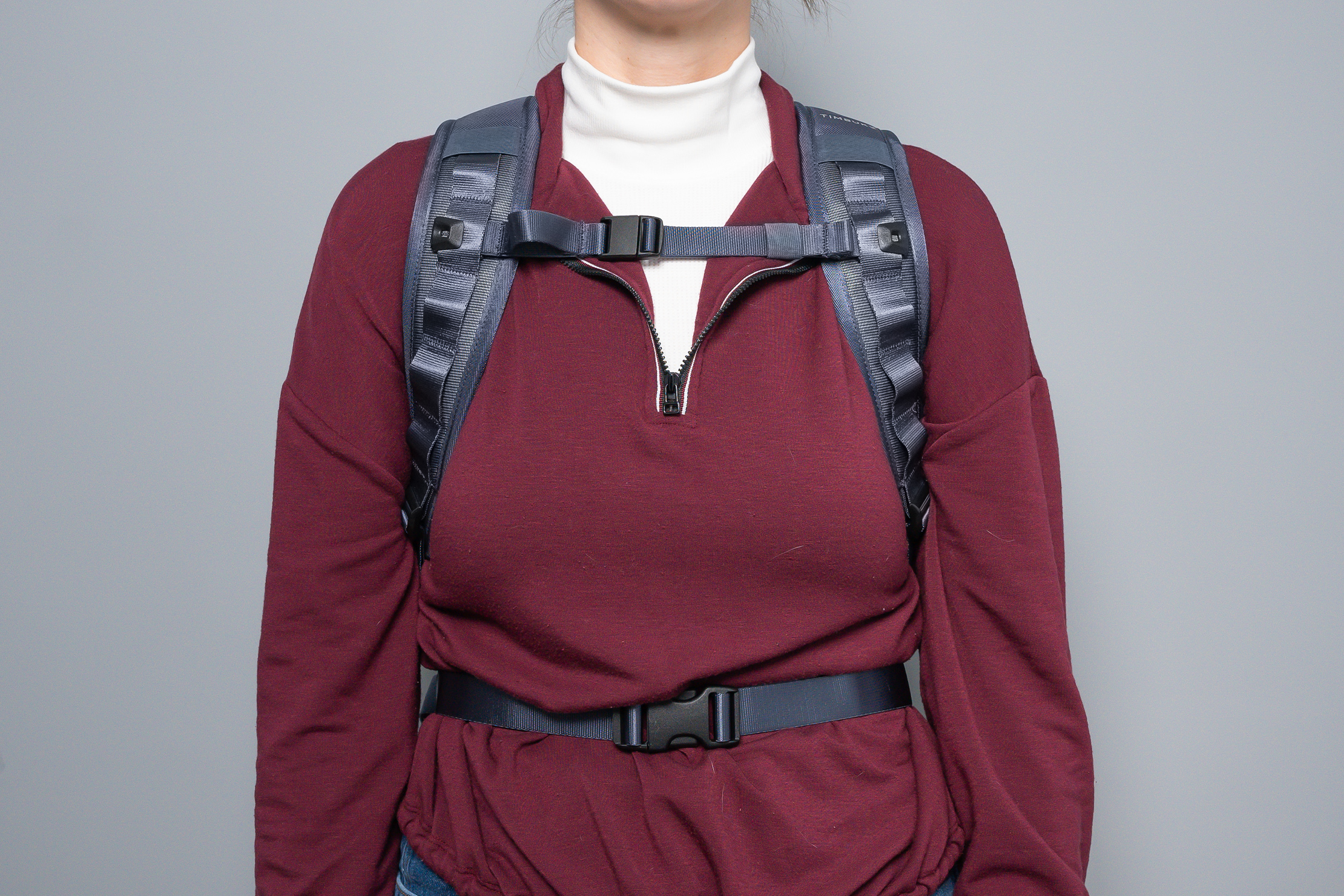
The Pack Hacker crew is slightly divided on the back panel, though. Most of us feel the noticeable gap between the foam panels. Some don’t mind the sensation, but others do, so your mileage may vary. On a similar note, having the hip belt cinched down when you’re not using it is fine; none of us felt it bump against the back uncomfortably.
Inside The Backpack
The Robin Commuter Backpack has an upper and a lower front pocket. Though they’re both at the front, accessibility feels like polar opposites. The lower front pocket’s zippered opening recesses into a crease, making fishing out everyday carry items like earphones, a minimalist wallet, or even a pack of gum rather tricky. While this tight opening makes for very good water resistance, accessibility suffers too much. For this reason, we rarely ever used this pocket despite it having ample space for said items.
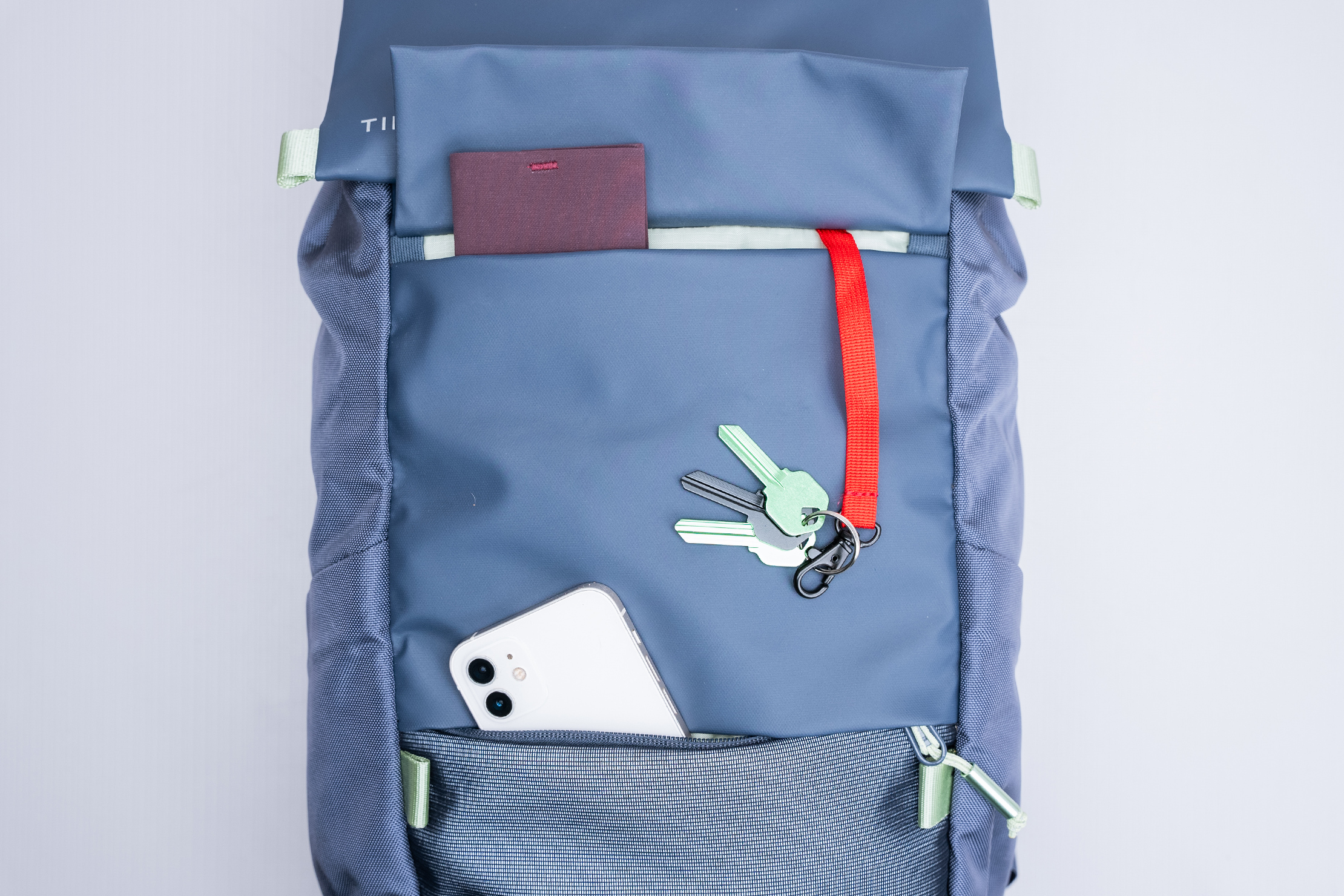
Meanwhile, the upper front pocket has a magnetic flap that’s both easier to open and more satisfying to close. It also has a bit more space but lacks the tiny bit of padding the lower pocket has. We used this pocket the most, probably more so than the main compartment, because of the tactility the two embedded magnets provide. There’s also a short key leash inside, which makes keeping track of keys much easier.
Arguably, a feature that should be in all daypacks is a travel water bottle pocket, and we’re happy to report that this bag has two. They’re not immediately visible since they lay flat when unoccupied. Small elastics keep them down, while gussets let them expand once you insert a bottle. They each also have a drainage hole to let any water out, a clear sign that Timbuk2 expects you to put this bag through a few splashes or so.

Even though these pockets can fit 21-ounce insulated bottles without issue, there is a caveat. Namely, a fully packed main compartment can squeeze out the available space from these pockets. When this happens, inserting a bottle is nearly impossible, so we suggest putting your bottles in first if you plan to fully pack out the main compartment.
So that brings us to the main compartment, solely guarded by a magnetic flap similar to the upper front pocket, only much larger. Unlike that pocket—which had two embedded magnets—this flap has two magnetic buckles. At first, we were a bit skeptical about how secure this would be. We recall encountering a similar setup with the Bellroy Melbourne, whose magnetic buckles snapped open with enough jostling and shock. Fortunately, that’s not the case with the Robin Commuter Backpack, and your only challenge with these buckles is needing to align them so they lock properly. As an aside, there are no underlying waterproof zippers or rolltop to back up this magnetic closure. In other words, though the Robin Commuter Backpack is very water resistant, it’s still not a waterproof bag.

Packing the interior takes some strategizing because of the bag’s layout. It’s tall, slim, and loaded from the top, so you can imagine how tricky it can be to get gear inside in an organized fashion. As mentioned earlier, you must also account for the water bottle pockets. The best way to pack it is to lay the bag on its back, insert your water bottle first, and stack gear from largest to smallest. Putting the bag on its back also stops the main compartment’s flap from constantly closing. However, remember that the rainfly is also situated at the base, so the floor isn’t flat.
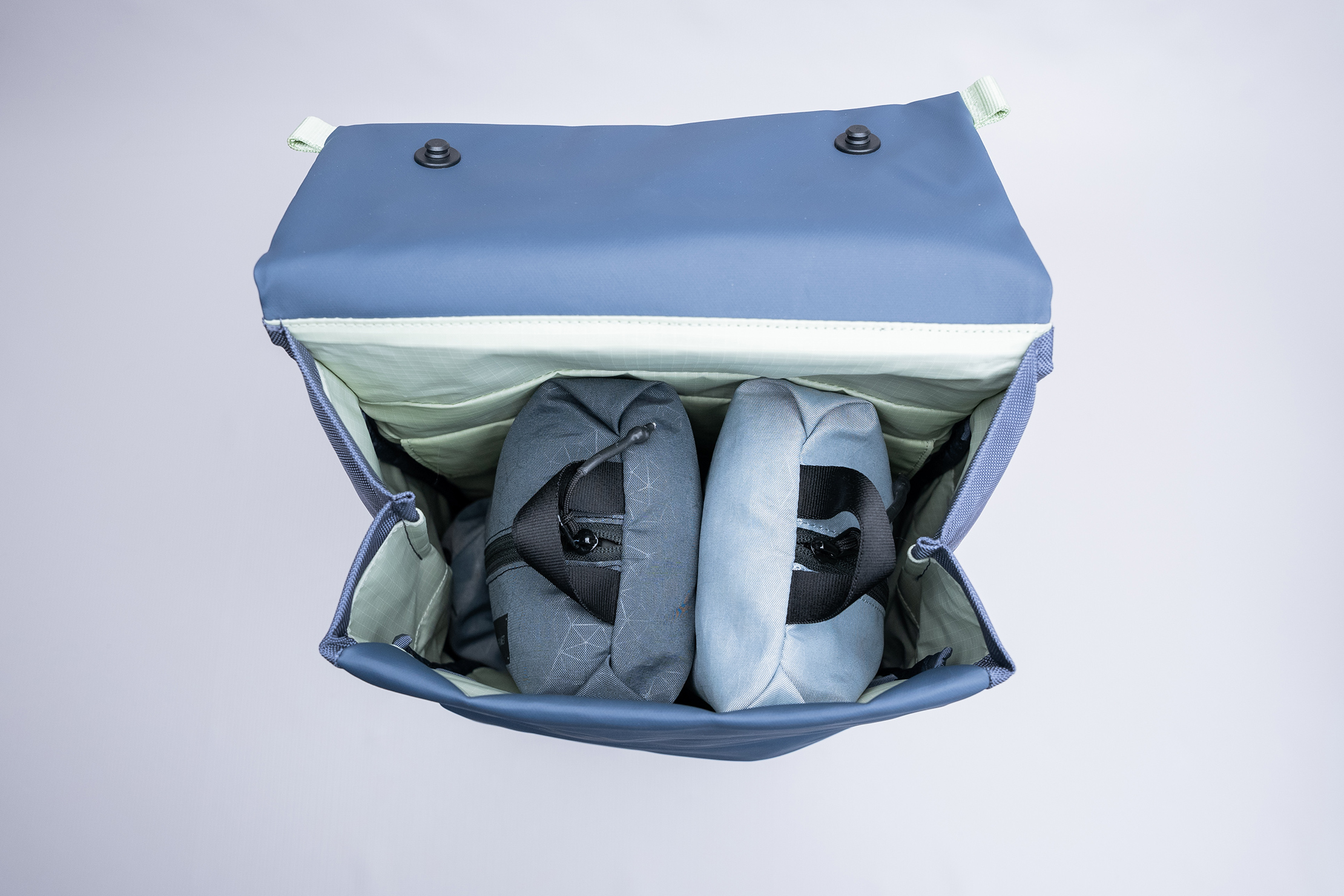
Lastly, there’s an elevated laptop sleeve in the main compartment, rated for up to a 16-inch device. Since there’s no tight seal to back up the flap, the sleeve has its own flap with a full-length hook-and-loop strip. While this is good for water resistance, it takes extra effort to undo the hook-and-loop whenever you need to take out your laptop. It’s not a big deal in the grand scheme of things; it’s just a tiny nitpick.
Usage Timeline
Condition: Excellent
- Between the materials and features, we’re feeling pretty confident that this backpack won’t be letting any water in
- Pretty slim design considering its liter capacity
- Mixed feelings about the magnetic buckle closure—we’ve had issues with this type opening on their own in the past
Condition: Excellent
- Between the material and all the built-in features, we have no concerns that rain will be getting into this bag
- Digging the front magnetic pocket
- Laptop feels super secure in the main compartment, even if that means access is a little slow









Get your questions about the Timbuk2 Robin Commuter Backpack answered from our team and the Pro Community right here on the page. Plus, join discussions with other members about gear, guides, and more.
Join Pack Hacker Pro or, Sign In